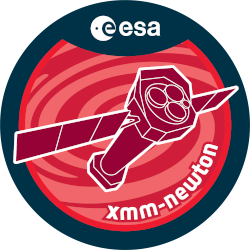

| Proposal ID | 004935 |
| Title | STUDYING THE SMALLEST FLARES ON ACTIVE STARS: PROXIMA CENTAURI |
| Download Data Associated to the proposal | https://nxsa.esac.esa.int/nxsa-sl/servlet/data-action-aio?obsno=0049350101 |
| DOI | https://doi.org/10.5270/esa-s3cy089 |
| Principal Investigator, PI | Dr Manuel Guedel |
| Abstract | Proxima Centauri is the nearest star to the Sun, and at the same time a well-studied, magnetically active late-type flare star. It is frequently flaring, with flare energies similar to larger solar flares. There is increasing evidencethat flares play a major role in solar coronal heating, in particular the largenumber of small flares (microflares). This concept needs to be tested on magnet-ically active stars. Selecting the most sensitive instrument and the nearestactive star will give access to the lowest-energy but potentially most importantX-ray flares ever studied on any star other than the Sun. Our proposal fora 50ks XMM observation of Prox Cen will thus build a bridge fromsolar concepts to magnetically active stars. |
| Publications |
|
| Instrument | EMOS1, EMOS2, EPN, OM, RGS1, RGS2 |
| Temporal Coverage | 2001-08-12T03:14:23Z/2001-08-12T22:37:34Z |
| Version | 17.56_20190403_1200 |
| Mission Description | The European Space Agencys (ESA) X-ray Multi-Mirror Mission (XMM-Newton) was launched by an Ariane 504 on December 10th 1999. XMM-Newton is ESAs second cornerstone of the Horizon 2000 Science Programme. It carries 3 high throughput X-ray telescopes with an unprecedented effective area, and an optical monitor, the first flown on a X-ray observatory. The large collecting area and ability to make long uninterrupted exposures provide highly sensitive observations. Since Earths atmosphere blocks out all X-rays, only a telescope in space can detect and study celestial X-ray sources. The XMM-Newton mission is helping scientists to solve a number of cosmic mysteries, ranging from the enigmatic black holes to the origins of the Universe itself. Observing time on XMM-Newton is being made available to the scientific community, applying for observational periods on a competitive basis. |
| Creator Contact | https://www.cosmos.esa.int/web/xmm-newton/xmm-newton-helpdesk |
| Date Published | 2002-10-03T00:00:00Z |
| Last Update | 2025-08-04 |
| Keywords | "XMM", "sensitive instrument", "major role", "lowest energy", "frequently flaring", "flare microflares", "flare play", "prox cen", "magnetically active stars", "active stars", "proxima centauri", "active star", "flare energies", "solar coronal heating", "solar concepts", "larger solar flares", "xray flare" |
| Publisher And Registrant | European Space Agency |
| Credit Guidelines | European Space Agency, Dr Manuel Guedel, 2002, 'STUDYING THE SMALLEST FLARES ON ACTIVE STARS: PROXIMA CENTAURI', 17.56_20190403_1200, European Space Agency, https://doi.org/10.5270/esa-s3cy089 |